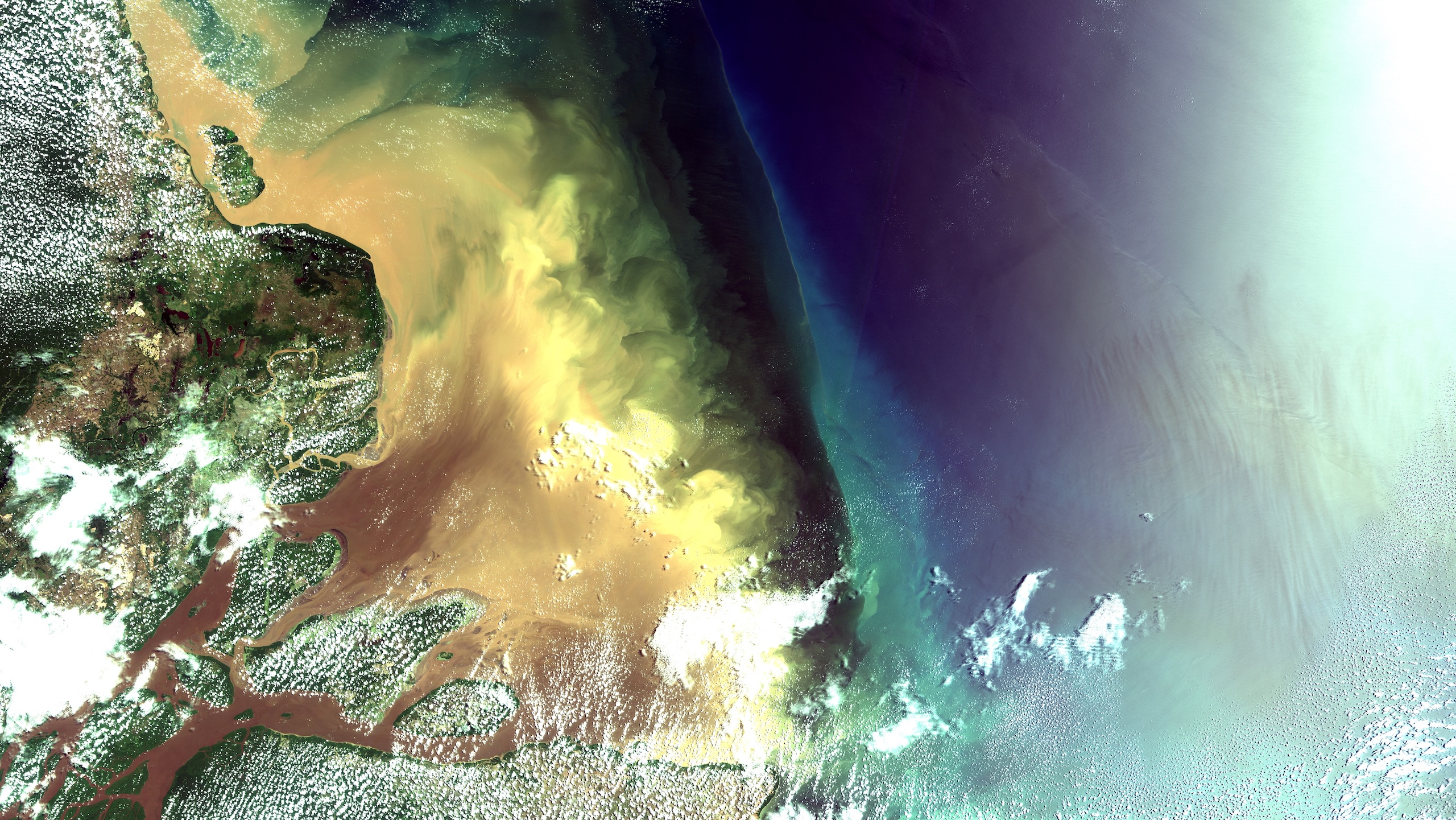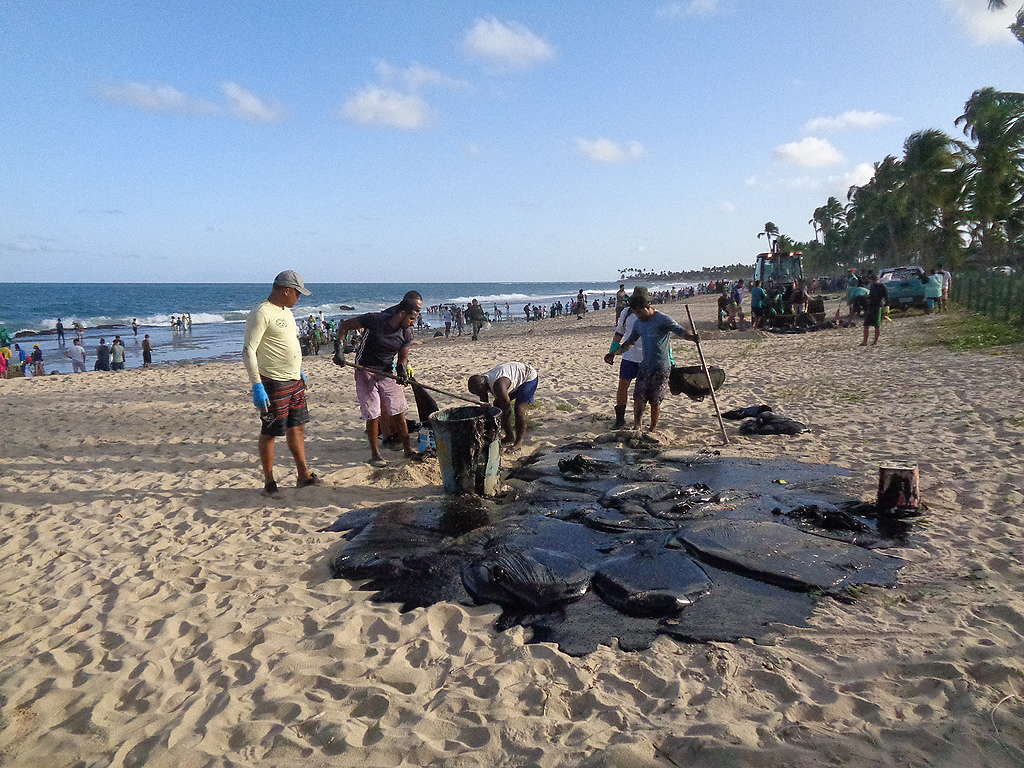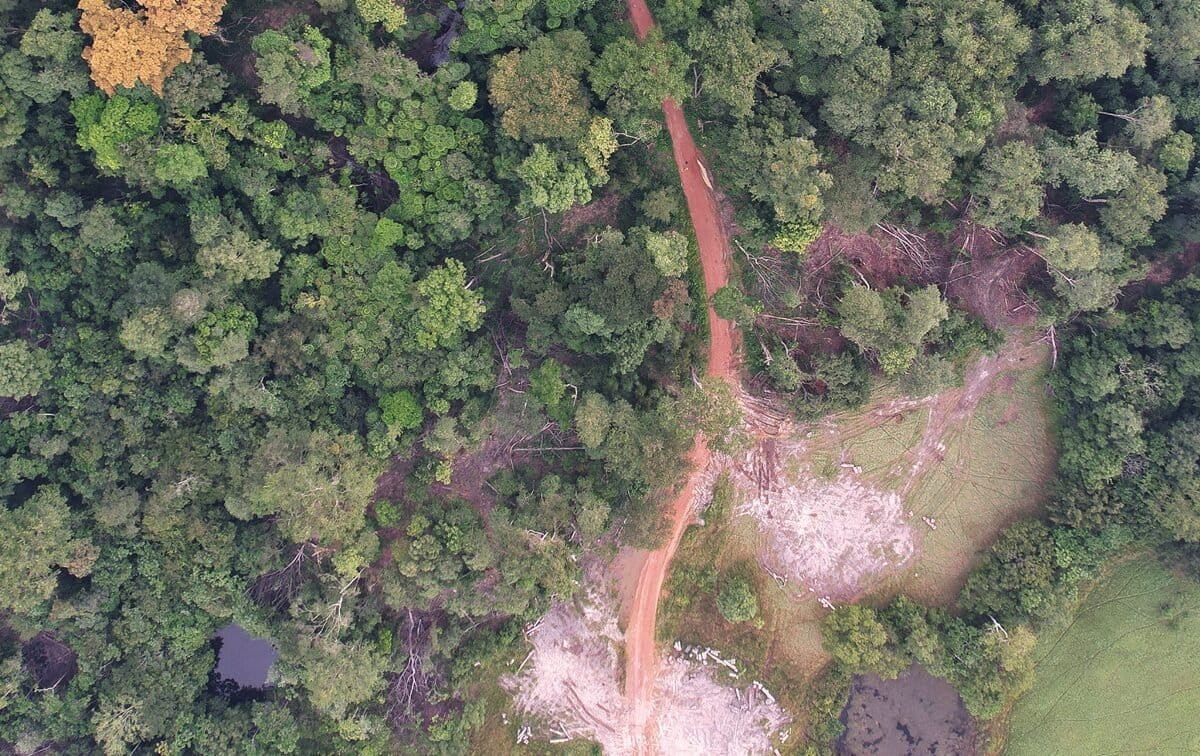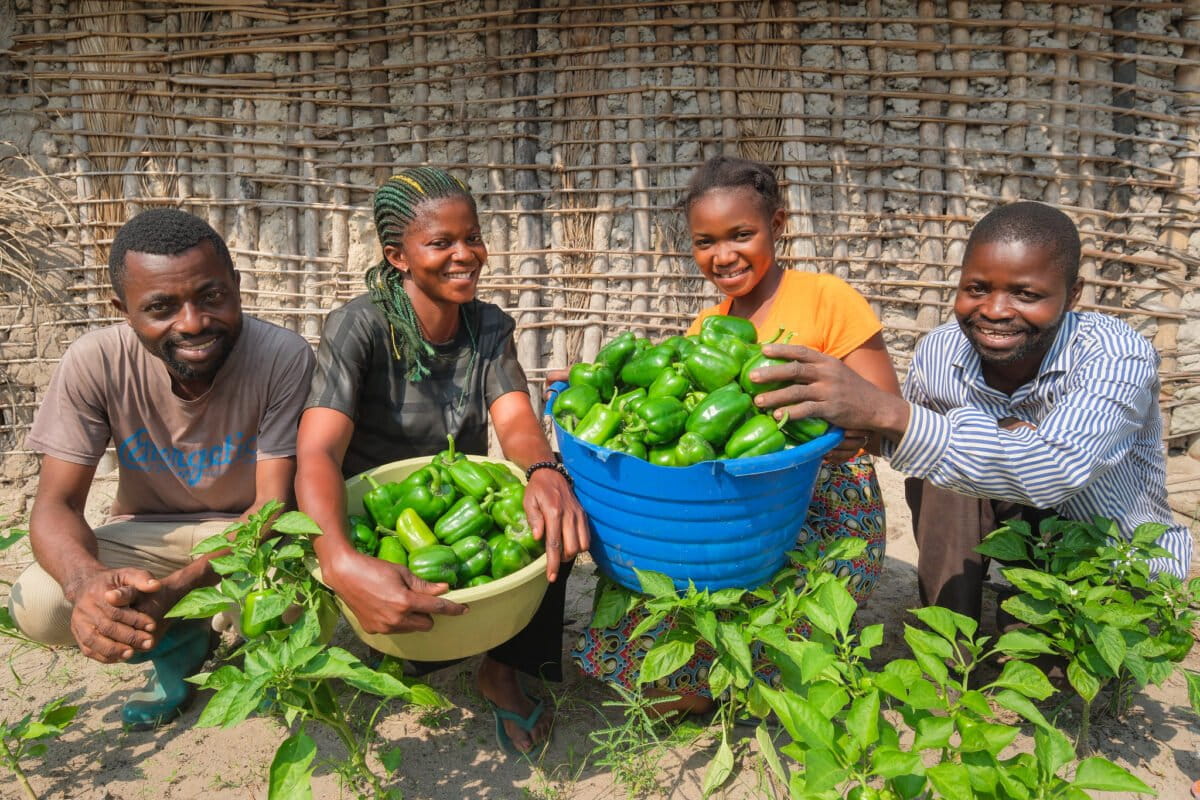- Ahead of the COP30 U.N. climate summit in Brazil, a report by environment-monitoring organization SkyTruth mapped the environmental impact of the advance of offshore exploration for fossil fuels in Brazil, criticizing the country’s unfulfilled energy transition promises.
- The study detected 179 probable oil slicks in Brazilian waters since 2017, as the oil and gas sectors boomed. Analyses showed that traffic from fossil-industry vessels grew by 81% between 2012 and 2023, while methane burning skyrocketed — releasing into the atmosphere the equivalent emissions of 6.9 million cars annually.
- According to the investigation, Brazil still embraces environmentally controversial initiatives, such as oil exploration at the mouth of the Amazon River. This agenda brings risks to rich marine ecosystems and Indigenous and traditional communities, moving the country further away from its climate and conservation goals.
This November, as Brazil opened the curtains to host the U.N. Climate Conference, COP30, in the Amazonian city of Belém, the troubles orbiting the country’s environmental agenda were featured in a new report by U.S.-based conservation technology nonprofit SkyTruth, which is dedicated to satellite-based environmental monitoring. In the run-up to the climate summit, the study revealed the growing impact offshore oil and gas structures pose to Brazil’s vulnerable areas, especially in biodiverse marine regions such as the mouth of the Amazon River.
At a time when global eyes have turned to the Amazonian city, leading to increasing interest in the environmental solutions Brazil seeks to offer, the investigation questioned the host nation’s role as a climate leader. As one of its main arguments, the report jumped into the dilemmas of an economic model that remains highly dependent on something that Brazilian President Luiz Inácio Lula da Silva’s administration has been promising to replace: Fossil fuels.
The investigation maps oil spill-driven pollution and highlights rapid growth in both the traffic of oil industry vessels and the level of methane emissions, released through leaks during extraction. The numbers come in the wake of the expansion of the energy sector itself, which is growing in the opposite direction of the search for less-polluting energy sources. According to SkyTruth, “between 2014 and 2024, Brazil’s oil production increased by more than 49% and natural gas production increased by over 78%.”
The study points to contradictions in the Brazilian government’s climate rhetoric: In October, as Lula himself declared, the government promised to make the country an “energy transition champion.” It warns of the possible impacts of advancing hydrocarbon exploration in ecologically sensitive areas, including damage to various species, biomes and historically marginalized groups, such as Indigenous communities and quilombolas, traditional Afro-Brazilian communities originally formed by formerly enslaved individuals.
The investigation highlights a range of environmental harms. Since 2017, it says, satellite monitoring has observed “179 probable oil slicks” in Brazil’s exclusive economic zone (EEZ), the marine area extending 200 nautical miles (about 370 kilometers) from the Brazilian coastline, over which the country has sovereign rights. Within Brazil’s EEZ, between 2012 and 2023, oil and gas vessel traffic increased by 81%, the report said.

Meanwhile, pollution followed suit, with emissions skyrocketing over a similar period. The report revealed that oil and gas facilities within Brazil’s EEZ “were observed to flare 12.5 billion cubic meters of natural gas since 2012” — which also clashes with Brazil-based projects seeking a path to decarbonization. According to SkyTruth, the total amount of gas burned is equivalent to the annual carbon dioxide emissions of about 6.9 million passenger cars.
“Offshore development continues to undermine Brazil’s ability to achieve its climate goals, including climate neutrality by 2050. [Brazil-based network] Climate Observatory (OC) estimates that Brazil would need an 80% reduction of its oil and gas production from its 2022 levels in order to comply with the Paris Climate Agreement. In addition to its global climate implications, the oil and gas industry causes significant harm to local ecosystems and coastal communities in the areas of extraction. Air, water, and noise pollution often accompany oil and gas development, harming marine life and the people who depend on the ocean for sustenance,” the report states.

The Amazon deserves attention, but there are ‘other critical areas’
Speaking to Mongabay, geologist and SkyTruth CEO John Amos said the COP30 summit “is a critical moment” for the world to lay out a structure to transition away from fossil fuels, as was agreed upon two years ago in Dubai, at COP28. “Brazil has a tremendous opportunity to show environmental leadership” at the summit, Amos said, both in terms of “accelerating the equitable designation of protected areas in partnership with Indigenous peoples and local communities” and also in “ensuring these places are fully or highly protected.”
However, Amos said that to remain faithful to global promises and commitments, the country must be responsive to discussions surrounding perilous infrastructure projects in its main biomes. Amos noted a recent decision by Brazil’s environmental agency, IBAMA, greenlighting state-owned oil firm Petrobras to start exploratory drilling at the mouth of the Amazon River — an issue that has sparked environmental and social controversy for years. While noting that recommending specific policy remedies for this “undesirable situation” is not among his organization’s areas of expertise, Amos said “the approval of drilling in the Amazon River mouth strikes many as counterproductive and deeply concerning.”
Moreover, SkyTruth wants to “call attention to the large coalition of environmental groups, Indigenous peoples, and quilombola communities who have sued Lula’s government to overturn the [exploration] decision, and the work undertaken by organizations like Observatorio do Clima [OC] to sketch out alternative futures for Petrobras and the Brazilian energy industry,” Amos said. “There are a lot of fantastic proposals from communities and experts working in the Brazilian context, and it’s simply our job to help them visualize and communicate why this drilling is so problematic.”

The report Amos helped to build also reveals that among all nine Amazonian countries, Brazil (which holds the largest portion of the rainforest) is responsible for more than half (52%) of the fossil fuel projects in the Amazon.
The study criticized the maintenance of fossil fuel exploitation as a “cornerstone” of the Brazilian economy in the short term, warning that if this trajectory continues, Brazil is on course to become one of the world’s top offshore oil producers by 2040. “This outcome is at odds with the Paris Agreement’s 1.5°C [2.7°F] target and the Kunming-Montreal biodiversity commitments made by Brazil,” it says.
The biodiversity targets to be achieved by 2030 under the Kunming-Montreal Global Biodiversity Framework include the conservation of 30% of land, sea and inland waters (such as rivers, lakes and aquifers), the restoration of 30% of ecosystems degraded by human activity, and halving the introduction of invasive species, among others.
The report also raised questions about the focus of Brazil’s conservation goals. Although it recognizes the Amazon Rainforest as “renowned for its biodiversity and climate change mitigation potential,” it warns that the country’s marine environment “receives far less attention.”
While Brazil has managed to exceed the 30% terrestrial protection target, marine conservation remains below the target, at 26.7%. “While that appears to be quite close to the goal,” the study says, “the [U.S.-based nonprofit] Marine Conservation Institute analyzed 84% of the marine space that falls within Brazil’s protected areas and found only 12% to be fully or highly protected [amounting to 3.2% of the EEZ]. Meanwhile, the oil and gas industry continues to grow, and with it, threats to Brazil’s marine environments.”
Amos made a similar point. “Brazil is blessed with extraordinary landscapes and immense biodiversity, and the Amazon Rainforest is in many ways the ‘crown jewel.’ But of course, there are other critical areas as well, from the Pantanal [wetlands] and Atlantic forests to many rich marine environments. This includes the coral reefs at the mouth of the Amazon River, which biologists have only just begun to explore and are perilously close to the areas being threatened by intensive new oil and gas extraction,” he said.
“Rather than shifting focus away from the Amazon, we should be making more space to talk about biodiversity, recognizing that all these areas are part of an interconnected system, and all are threatened by extractive activity,” he told Mongabay.
Brazil’s Ministry of Environment and Climate Change (MMA) did not respond to Mongabay’s request for comment on the report and its findings by the time this story was published.
Meanwhile, on Nov. 18, in a decision widely perceived as positive for ocean conservation, Brazil joined the High Level Panel for a Sustainable Ocean Economy (also known as the Ocean Panel), committing to “sustainably manage” all 3.68 million square kilometers (1.42 million square miles) of its national waters by 2030. According to the panel, Brazil’s effort at COP30 to join the multilateral initiative as its 19th member “brings important leadership and momentum to ocean-climate action.”
The multiple threats to Brazil’s marine life
SkyTruth’s 24-page mapping report also delves into the impacts of fossil fuel development on marine life. It estimates that 13 of the country’s 160 marine protected areas (MPAs), coincide with oil and gas infrastructure, concession blocks or detected oil slicks, and that “nearly all of the MPAs have some amount of oil-related vessel traffic moving through them — a fact which contradicts their designation as environmentally protected.”

The affected areas include biodiversity hotspots. The report notes that about 36% of Brazil’s “ecologically important” habitats — which include corals, mangroves, seagrasses, salt marshes and seamounts — fall into MPAs, leaving the remaining 64% vulnerable to impacts, “including from the oil and gas industry.”
According to Maria João Ramos Pereira, who holds an ecology Ph.D. from the University of Lisbon in Portugal and is vice president of the nonprofit scientific organization Brazilian Society of Mammalogy (SBMz), the data presented in the study “undeniably represent a serious conflict for the conservation of marine biodiversity.”

“During exploration and transportation, the risk of [substance] spills is constant. Large spills cause environmental catastrophes, resulting in immediate fatalities in all organisms and contaminating the water and seabed in the long term. Recent history has shown us this all too often,” she told Mongabay.
Problems and contradictions go further. Covering more than a quarter of the EEZ are 20 sites known as Important Marine Mammal Areas (IMMAs). However, the study shows that only a few, amounting to 6% of the total IMMA area, are part of marine protected areas. Some species, such as the humpback whale (Megaptera novaeangliae) and the Antarctic minke whale (Balaenoptera bonaerensis), are particularly affected by the lack of safeguards. Humpback whales also face another risk: The possibility of colliding with vessels, since their migration corridor is located in prominent areas of oil exploration. Pereira underscored these warnings.
“Whales and dolphins often surface or dive rapidly in response to sudden, intense seismic noise, leading to rapid decompression and consequent barotrauma. Barotrauma is a physical damage to tissues caused by sudden pressure differences, which can result in severe internal bleeding, irreversible brain and hearing damage, and eventual death,” said Pereira, who is also a professor at the Biosciences Institute at the Federal University of Rio Grande do Sul (UFRGS), in southern Brazil.
The situation generates a chain reaction. The study also indicates that coastal communities depend on marine habitats for their income and subsistence, while pollution and degradation of sensitive ecosystems harm local economies. Examples include the socioeconomic problems resulting from the oil spill on Brazil’s northeast coast in 2019 and the pollution that still plagues Rio de Janeiro’s Guanabara Bay, where more than 1 million liters (264,000 gallons) of crude oil spilled at the beginning of the millennium.

According to SkyTruth, science has shown that living near an oil or gas well “increases exposure to air pollutants, resulting in adverse health effects.” Greater protection of biodiverse habitats along the Brazilian coast would benefit both marine life and the coastal communities that depend on it, the report concludes.
Given the data presented in the report, Nicole Oliveira, executive director of the Arayara International Institute, an organization that works on energy, climate and sustainability issues, cited possible solutions that “can significantly reduce short-term risks,” in addition to creating a framework for medium- and long-term transformation.
“There are several mitigating actions that can be applied in Brazil to protect Marine Protected Areas (MPAs) and prevent greater environmental damage in the short term,” she told Mongabay by email, adding that measures should “focus on regulatory strengthening, spatial planning, emission control, and community protection.”
Among the possible paths, Oliveira advocates the need to prohibit the offering of new fossil fuel exploration blocks in areas of “high or very high priority for biodiversity conservation,” as well as to develop plans to protect corals and ecological zones. All this in order to “understand the potential impacts of new exploration blocks and to guide evidence-based decision-making.”
According to Oliveira, there is no secure future without the development of a national energy transition plan, which would involve declaring the Amazon and its mouth an “oil and gas-free territory” and decommissioning existing fossil fuel infrastructure there.
She advocated measures that start “an ambitious and objective target for the phase-out of fossil fuels, addressing both supply and demand, while providing a clear long-term pathway toward sustainability.”

Pereira, from UFRGS, highlighted the potential irreversibility of the environmental damage that comes with Brazil’s current exploitation package, despite the various promises made by authorities. “The damage to marine biodiversity resulting from the overlap between fossil fuel infrastructure and Marine Protected Areas may be irreversible,” particularly when the risks materialize in ecosystems of “high ecological importance,” she said.
“Maintaining this commitment to fossil fuels, destroying marine ecosystems, leading to the extinction of species, contaminating the food chain through spills and chronic pollution, is a crime against the future,” Pereira said. “We are not talking about an effect only on wildlife, but also on our food security, the livelihoods of coastal communities, and ultimately global health, ignoring scientific knowledge and the knowledge of traditional communities, as well as the many more sustainable alternatives that exist in terms of energy generation and substitutes for petroleum products.”
Banner image: An exploration platform of Brazilian state-owned oil firm Petrobras, between two vessels. Image by Agência Brasil via Wikimedia Commons (CC BY-SA 4.0).
This story was first published here in Portuguese on Nov. 14, 2025.
Coral biodiversity hotspot at risk from fossil fuel expansion, report warns














